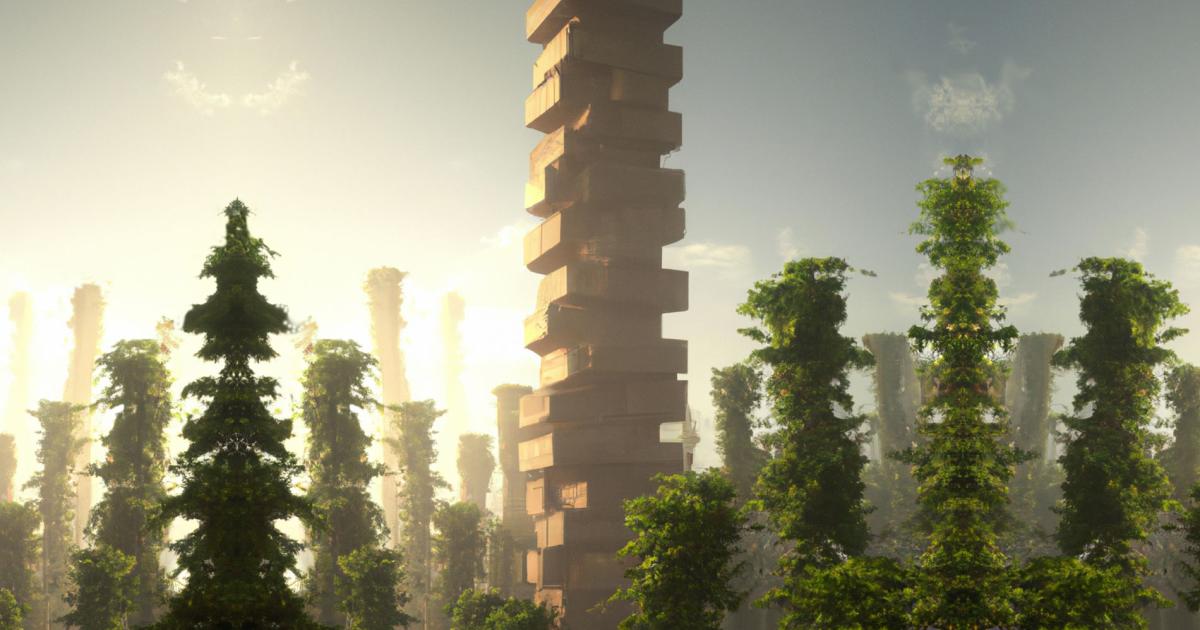
Reprinted from GreenBuzz, a free weekly newsletter. Subscribe here.
The game of Jenga and sustainability may seem to have little in common. After all, one involves a delicate and complex balancing act where disturbing a critical piece of the system could lead to its overall collapse. And the other is … well, Jenga.
Jenga, for the uninitiated, is a popular game, originated in Britain and now marketed by Hasbro, the game and entertainment company whose brands include everything from Monopoly and My Little Pony to Transformers and Twister.
The game’s name is derived from the Swahili word for “build.” It consists of 54 wooden blocks stacked in towers — 18 layers of three blocks each. Players must remove one block per turn at any level below the highest layer in such a way that the tower doesn’t collapse. The game ends when any portion of the tower falls.
How many social and environmental ‘blocks’ can one remove before the entire system collapses?
Jenga has been ascribed with myriad benefits for players, including improving motor skills, manual dexterity and hand-eye coordination as well as bolstering problem-solving, decision-making and strategy skills.
Indeed, there seems to be no shortage of metaphors and analogies about what Jenga means or the lessons it purports to tell. More than a few web pages are devoted to comparisons of Jenga — to the choices we make in life to relationships, the stock market, leadership, even failure.
But less so to sustainability. Which seems a missed opportunity: How many social and environmental “blocks” can one remove before the entire system gives way?
True, it’s a highly imperfect metaphor. For starters, Jenga is a game that can be played over and over. Just rebuild the blocks, and you’re back to square one. That isn’t possible with sustainability, in which some collapses — of climate stability, biodiversity, public health or social order, for example — can take years, decades, even centuries to rebuild.
And when it comes to sustainability, “players” encounter the tragedy of the commons, where one’s self-interest may trump the well-being of the collective. With 8 billion humans — not to mention billions of other critters and species — impacting the “blocks,” you have little control. Your go-to strategy may well be foiled by someone with a different strategy, or with no strategy at all. And yet each decision is impactful, determining the stability of the overall system.
Moreover, sustainability Jenga is not a zero-sum, winner-take-all affair. Rather, it’s about collaboration, synergy and interdependence. What happens to the system when you remove the natural resources block, the social equity block, the democracy block? What blocks, if any, can we do without? Which are keystones preventing the entire system from failing? How does the self-interest of different players affect the overall system’s stability?
Teachable moment
While rooting around the internet, I was delighted to see several examples of Jenga used to teach ecological resilience. One version, for middle-school students, can be used, according to its authors, “to introduce ecosystem concepts (e.g., an ecosystem has living and nonliving components, different types of ecosystems such as tundra, desert, etc.),” using color-coded Jenga blocks representing animals, plants, water and air.
Another version, designed for upper-level agriculture and natural resource undergrads, illustrates “the concept of resilience in natural resource use, policy and management.”
Yet another, for ninth graders, called “Biodiversity Jenga!”, was designed “to explain change and stability of biodiversity, investigate biotic and abiotic factors of ecosystems and identify the roles and relationships of organisms in their community in terms of impact on populations and the ecosystem.”
Wow! I wish ninth-grade me had benefited from such wisdom.
I love seeing these. But it would be a shame if such potentially powerful tools are available only to the young. What’s the potential to use these games inside companies to help teams understand what’s at stake — the various trade-offs within business strategy and implementation? How can they help fine-tune or overhaul supply chains or business models to meet the moment?
The complexity and fragility we encounter on a daily basis seem to be steadily growing. We’ve long understood the reliance by business on the natural environment and the interdependencies between economics and ecology. What’s less understood, at least by the masses, is the systemic nature of the choices we make — pull a thread here and something unravels over there, often with unintended consequences.
Can Jenga provide a window into that complexity? It’s hard to say, but the metaphor is too compelling to dismiss as some trivial pursuit.
Have you used Jenga as a teaching tool in your organization? If so, kindly drop me a note about what you’re doing and how it’s working.
Thanks for reading. You can find my past articles here. Also, I invite you to follow me on LinkedIn, subscribe to my Monday morning newsletter, GreenBuzz, from which this was reprinted, and listen to GreenBiz 350, my weekly podcast, co-hosted with Heather Clancy.
- SEO Powered Content & PR Distribution. Get Amplified Today.
- Platoblockchain. Web3 Metaverse Intelligence. Knowledge Amplified. Access Here.
- Source: https://www.greenbiz.com/article/its-jenga-world-after-all
- a
- About
- According
- Act
- affect
- After
- agriculture
- AIR
- All
- and
- animals
- arizona
- around
- authors
- available
- back
- basis
- before
- below
- benefits
- between
- Billion
- billions
- Block
- Blocks
- brands
- britain
- build
- business
- called
- CGI
- chains
- change
- choices
- Climate
- collaboration
- Collapse
- Collective
- Common
- Commons
- community
- Companies
- company
- compelling
- complex
- complexity
- components
- concept
- concepts
- Consequences
- control
- coordination
- could
- critical
- daily
- decades
- decision
- Decision Making
- delighted
- Democracy
- Derived
- designed
- determining
- different
- Dismiss
- Doesn’t
- doing
- each
- Ecological
- Economics
- ecosystem
- Ecosystems
- encounter
- ends
- Entertainment
- Entire
- Environment
- environmental
- equity
- etc
- Ether (ETH)
- Even
- everything
- example
- examples
- Explain
- factors
- Falls
- few
- Find
- follow
- Free
- from
- game
- Games
- gives
- Growing
- happens
- Hard
- hasbro
- Health
- help
- here
- highest
- highly
- How
- HTTPS
- Humans
- identify
- Impact
- impactful
- improving
- in
- include
- Including
- Internet
- introduce
- investigate
- invite
- IT
- layer
- layers
- lead
- Lessons
- Level
- little
- living
- Long
- love
- make
- management
- manual
- many
- masses
- means
- Meet
- models
- moment
- Monday
- more
- morning
- Motor
- name
- Nasdaq
- Natural
- Nature
- Newsletter
- ONE
- Opportunity
- order
- organization
- originated
- Other
- overall
- Overhaul
- past
- piece
- plants
- plato
- Plato Data Intelligence
- PlatoData
- played
- players
- podcast
- policy
- Pony
- Popular
- popular game
- populations
- possible
- potential
- potentially
- powerful
- preventing
- problem-solving
- provide
- public
- public health
- Reading
- Relationships
- reliance
- remove
- representing
- resilience
- resource
- Resources
- roles
- rooting
- seeing
- seems
- several
- shortage
- skills
- So
- Social
- some
- Someone
- something
- square
- Stability
- stacked
- stake
- starters
- Strategy
- Students
- subscribe
- such
- supply
- Supply chains
- Sustainability
- synergy
- system
- systemic
- Take
- Teaching
- teams
- terms
- The
- their
- three
- to
- too
- tool
- tools
- Tower
- transformers
- trump
- TURN
- types
- understand
- understood
- use
- various
- Water
- web
- weekly
- What
- which
- wisdom
- within
- without
- wooden
- Word
- working
- world
- would
- years
- young
- Your
- zephyrnet











